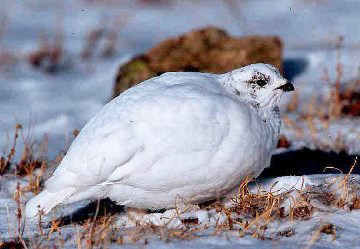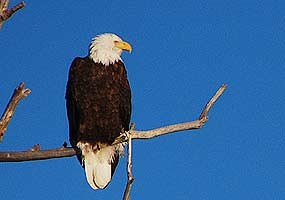
NPS/Sally King Get specific information on viewing sandhill cranes during their spring and fall migration. 
NPS/Patrick Myers 
Courtesy Colorado Birding Society 
NPS/Sally King Red-breasted nuthatches, along with white-breasted nuthatches and pygmy nuthatches, are sometimes seen walking up and down trees on the Mosca Pass Trail and Montville Trail. 
NPS Peregrine falcons nest in high cliffs or forests of the Sangre de Cristo Mountains. In the 1970s, this species was federally listed as endangered. Due to recovery efforts, peregrines were de-listed in 1999. Continued recovery and monitoring efforts continue. Though they typically nest higher in the mountains, they sometimes glide over the park's entrance road and across the grasslands surrounding the dunefield. 
NPS/David Restivo Mountain bluebirds are often seen along the park entrance road, where they hunt for insects in the foothills and grasslands. Males are a brilliant blue color, while females are grey-blue. They are one of the first birds to arrive in spring, often first appearing in March, the snowiest month of the year. 
NPS 
NPS/Phyllis Pineda Bovin 
NPS/Steve Trimble Hummingbirds are summer residents of the park, nesting in tiny grass nests in the foothills. However, they have been observed feeding throughout the park, from grasslands to alpine tundra, as long as there are flowers present. Hummingbirds consume large quantities of flower nectar and even aspen sap. To supplement their diet, they also feed on small insects, especially those attracted to sap and nectar. Four species of hummingbird have been observed in the park (see bird list linked at top of page). 
NPS 
USFWS 
NPS/Patrick Myers 
NPS/Patrick Myers 
NPS/Patrick Myers Sandhill cranes bring excitement each spring when they return by the thousands to the San Luis Valley. Learn more about seeing these majestic birds on our Sandhill Crane Migration page. 
NPS/Patrick Myers 
USFWS |
Last updated: May 1, 2025
